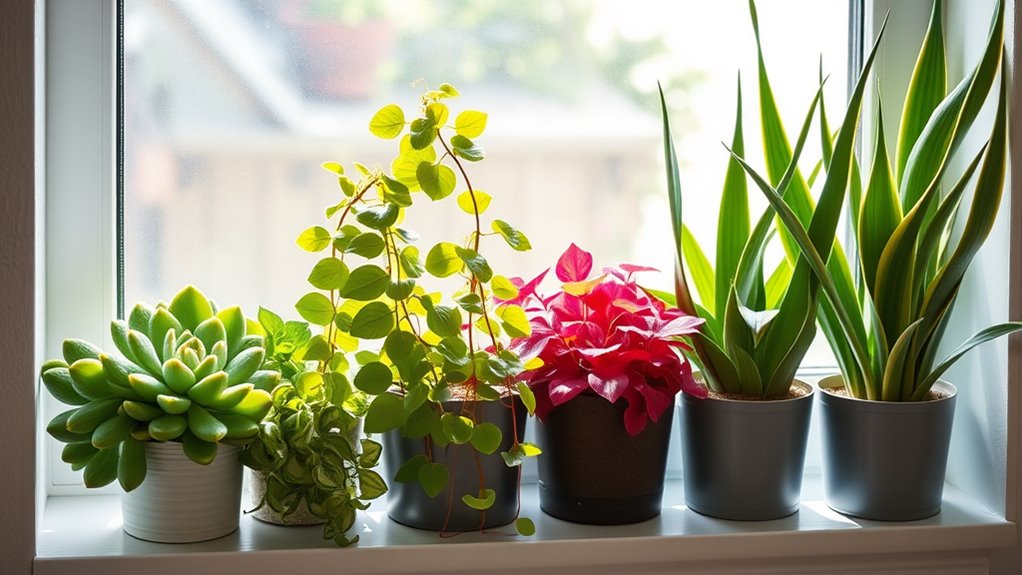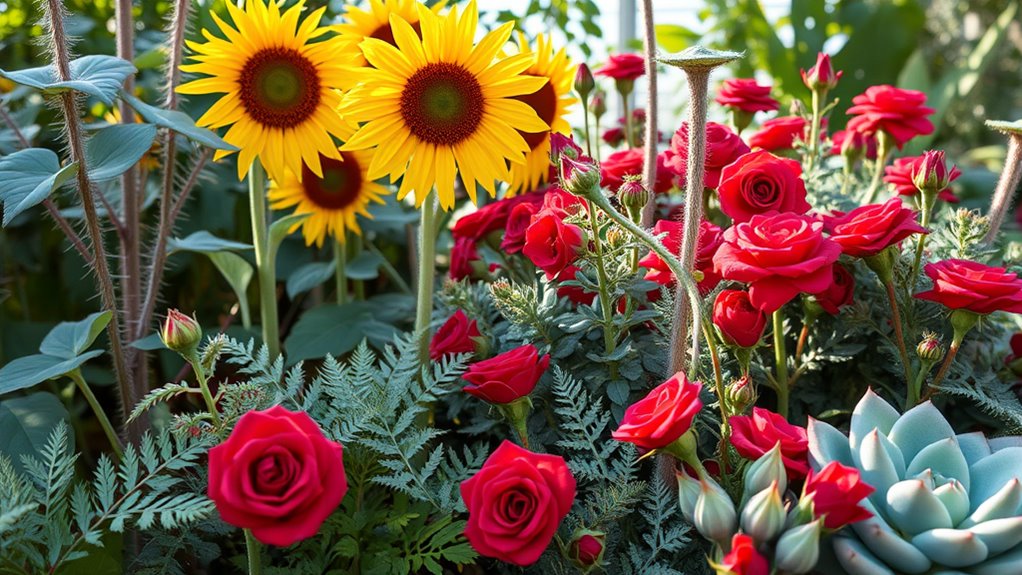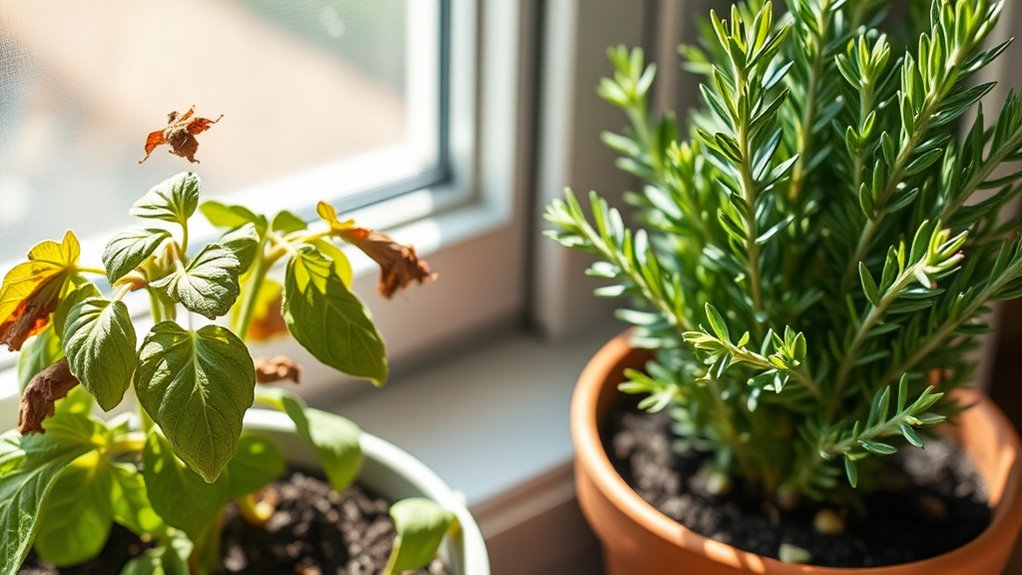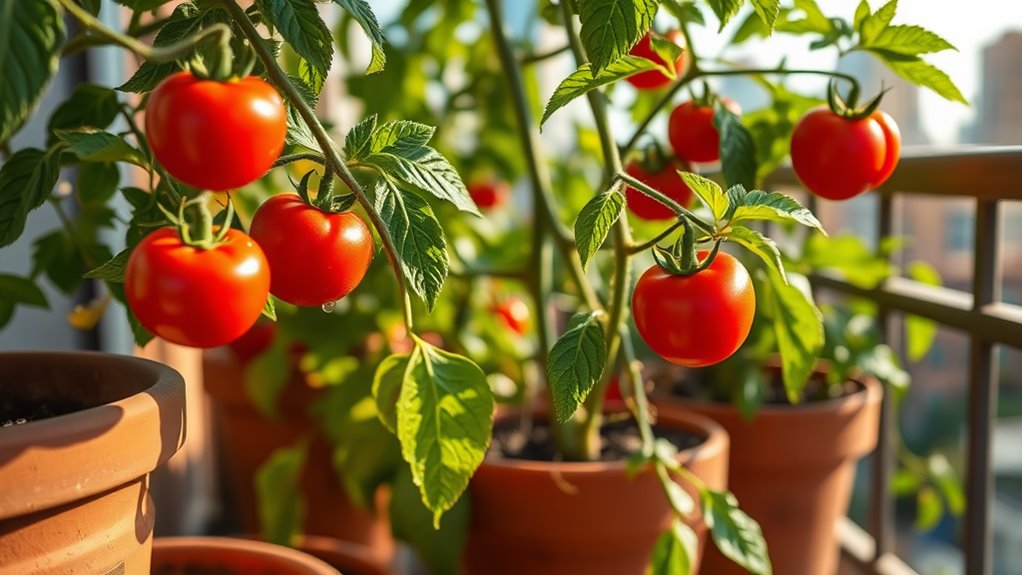These Low-Effort Plants Are Perfect for Beginners
You’re discovering low-effort plants that are perfect for beginners, like the Snake Plant, which tolerates low light and needs watering just every 2-3 weeks, or Pothos that thrives with minimal pruning and adapts to various conditions. These hardy options reduce your maintenance time, prevent common pitfalls like overwatering, and build your confidence effortlessly. Explore the details on placement, outdoor picks, and troubleshooting ahead to refine your setup.
Key Takeaways
- Snake plants are ideal for beginners, requiring watering every 2-3 weeks and thriving in low light.
- Pothos plants adapt easily to various conditions, needing minimal pruning and care for steady growth.
- ZZ plants resist pests and grow well in indirect light with infrequent watering, making them low-maintenance.
- Choosing easy-care plants reduces effort, helping beginners avoid common issues like overwatering.
- Basic care involves checking soil moisture and providing appropriate light to ensure healthy, stress-free plants.
Top Low-Effort Houseplants for New Gardeners
If you’re just starting out in gardening, low-effort houseplants offer an easy way to build your skills without constant upkeep.
As a beginner, you can kick off with hardy beginner plants like the Snake Plant, which tolerates low light and needs watering only every two to three weeks.
Pothos, another reliable beginner plant, thrives in various conditions and requires minimal pruning, making it ideal for busy schedules.
The ZZ Plant stands out as a low-maintenance beginner plant, adapting to dry soil and indirect light while resisting pests.
Succulents like Echeveria round out your options, demanding infrequent water and good drainage to flourish with ease.
These beginner plants let you master basics step by step.
The knowledge source discusses five resilient indoor plants that are ideal for novices.
Benefits of Choosing Easy-Care Plants
When you choose easy-care plants, you cut down on the daily maintenance they require, freeing up your time for other activities.
This reduction in care effort helps you avoid common pitfalls like overwatering or pest issues that beginners often face.
Plus, these plants boost longevity, allowing them to thrive longer with the right basic conditions.
Furthermore, these plants bring joy to novice gardeners by highlighting their low maintenance requirements.
They also embody the principle of Effortless Greenery, making them suitable for those with busy lifestyles.
Reduces Care Effort
Choosing easy-care plants reduces your maintenance workload significantly, as they thrive with minimal watering, pruning, and pest checks. This means you’re not tied to daily routines, freeing up time for other pursuits while keeping your space vibrant. Easy-care plants like snake plants adapt to low light and irregular watering, requiring only occasional attention to stay healthy. They minimize common issues, such as overwatering risks, through natural resilience.
To illustrate the benefits:
| Care Aspect | Reduction in Effort |
|---|---|
| Watering | From daily to every 1-2 weeks |
| Pruning | From frequent to rare |
| Pest Management | From regular to infrequent |
This practical strategy lets you enjoy a thriving garden with ease.
Boosts Plant Longevity
Easy-care plants enhance longevity by thriving in less-than-ideal conditions, which minimizes stress and extends their lifespan.
You’ll notice that these resilient varieties, like succulents or pothos, resist common issues such as root rot or pests, reducing the need for frequent interventions.
This durability means your plants flourish for years with minimal effort, saving you time and resources.
For instance, they adapt to varying light levels, maintaining health without constant adjustments.
Basic Care Requirements for Starter Plants
To keep your starter plants healthy, you’ll focus on key elements like watering, lighting, and soil maintenance.
For watering, check soil moisture regularly—water deeply when the top inch feels dry, but avoid soggy conditions to prevent root rot. Use filtered or settled water at room temperature for best results.
On lighting, ensure plants receive appropriate indirect light levels based on their type to support growth without stress.
For soil maintenance, select well-draining mixes and monitor pH; repot annually if roots crowd, and apply a balanced fertilizer every few weeks during growth seasons to sustain vitality. Remember that proper soil preparation is crucial for long-term plant health.
Additionally, these low-effort plants provide various benefits that enhance their appeal for novice gardeners.
Ideal Placement and Lighting Tips
One essential factor for your low-effort plants’ health is their ideal placement and lighting setup.
You need to match each plant’s light requirements to your space; for instance, succulents thrive in bright, indirect light near east or west-facing windows, while ferns prefer low-light spots away from direct sun.
Use a simple light meter to assess conditions, ensuring plants avoid harsh midday rays that cause leaf burn.
Rotate pots weekly for even growth, and adjust placements seasonally—move them closer to windows in winter.
Monitor for signs like yellowing leaves, tweaking setups to maintain vitality without overcomplicating care.
To complement proper lighting, pay attention to soil quality as it plays a crucial role in supporting lush growth.
Additionally, explore plant selection strategies to choose varieties that thrive in your indoor environment and create a cohesive garden.
Common Low-Maintenance Outdoor Options
Exploring low-maintenance outdoor plants can transform your yard with minimal fuss; options like lavender, sedums, and hostas thrive in various conditions without frequent watering or pruning. You’ll find these plants ideal for busy lifestyles, as they adapt to different soils and weather. For example, choose based on your space’s sunlight and drainage needs. Furthermore, resilient herbs such as those featured in thriving garden guides can be effortlessly incorporated for added variety. If you’re interested in expanding to food production, easy vegetables like those for beginner gardeners can be seamlessly added to your low-maintenance setup.
| Plant | Key Care Tips |
|---|---|
| Lavender | Full sun, well-drained soil; prune lightly in spring. |
| Sedums | Drought-tolerant; plant in rocky or poor soil. |
| Hostas | Shade-loving; water moderately and mulch for moisture. |
| Yarrow | Hardy in sun; requires minimal fertilization. |
This selection helps you create a vibrant, low-effort garden effortlessly.
Troubleshooting Simple Plant Issues
Even if you’re caring for low-effort plants, you’ll sometimes face issues like pest identification or watering problems. To handle these effectively, familiarize yourself with garden pests as outlined in essential management tips.
Start by spotting pests early through regular checks for unusual insects on leaves.
Once you’ve addressed these, tackle watering problems and leaf discoloration to keep your plants healthy with minimal fuss.
For optimal plant care, also learn to identify signs of overwatering to avoid common pitfalls like yellowing leaves and root damage.
Pest Identification
As a beginner with low-effort plants, you’ll often spot pests before they cause major damage; start by examining leaves, stems, and soil for telltale signs like tiny holes, sticky residue, or unusual insects.
Early detection keeps your plants thriving, so act quickly with these steps:
-
Check for aphids****: You’ll see small, green insects clustered on new growth; wipe them off with a damp cloth.
-
Spot spider mites: Look for fine webbing and stippled leaves; increase humidity to deter them.
-
Identify scale insects: These appear as tiny, armored bumps on stems; remove manually with a soft brush.
-
Detect fungus gnats****: Notice tiny flies around soil; let the top layer dry out between waterings.
-
Watch for whiteflies: Shake leaves to see white, moth-like insects; use yellow sticky traps for control.
Watering Problems
Watering problems often arise when you overwater or underwater your low-effort plants, leading to issues like root rot or wilting leaves that you can easily spot and fix.
To identify overwatering, check if soil stays soggy; you’ll see yellowing stems or mushy roots—remove affected parts and let soil dry out.
For underwatering, look for droopy leaves; water deeply until moist, but don’t saturate. Use a finger test: if the top inch is dry, it’s time to water.
Prevent issues by establishing a routine—water weekly and ensure good drainage to keep roots healthy.
Leaf Discoloration
Leaf discoloration in your low-effort plants can signal underlying issues like nutrient shortages or pests, so you’ll want to spot it early by examining leaves for yellowing, browning, or unusual spots.
Addressing this promptly prevents escalation; test soil and adjust care routines to restore health.
-
Check soil nutrients: Use a kit to identify deficiencies, then apply appropriate fertilizer.
-
Inspect for pests: Examine undersides and treat with neem oil if insects are present.
-
Adjust watering: Ensure even moisture to avoid over- or under-watering, which causes yellowing.
-
Optimize light: Relocate plants to indirect sunlight if discoloration indicates light stress.
-
Prune affected areas: Remove discolored leaves with clean shears to promote recovery.





